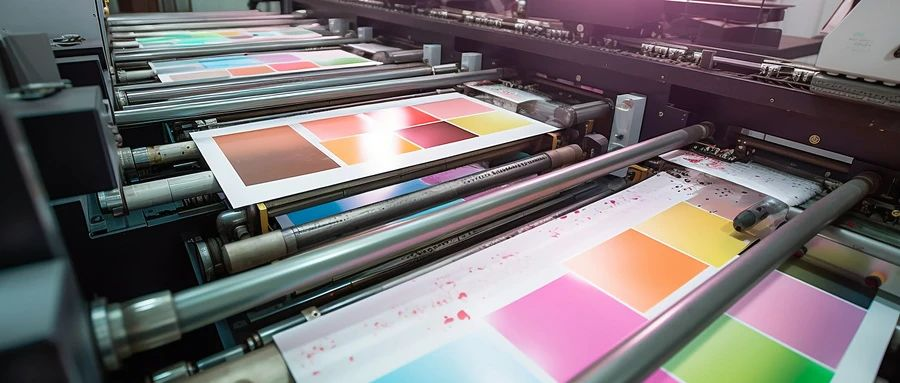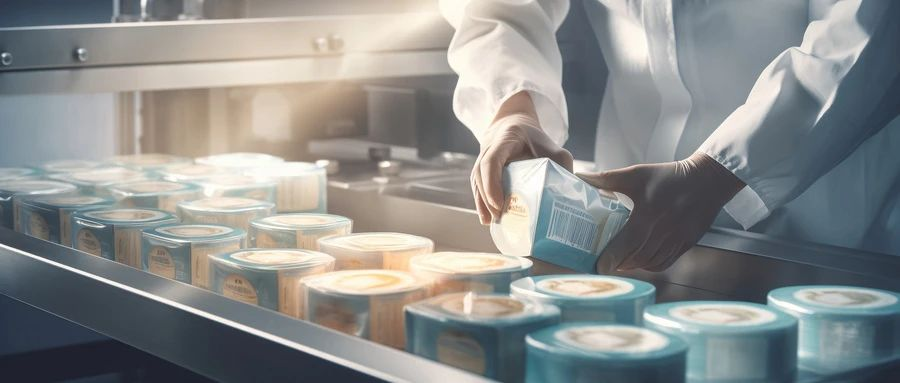

Views: 1588 Author: Nicole Yang Publish Time: 2023-10-27 Origin: Site









With the continuous development of our country's economy, self-adhesive labels have been widely used in various fields. However, due to the uneven economic development in our country, the technical level of self-adhesive printing enterprises in many areas is relatively backward and is often troubled by some problems. Therefore, in this article, the author will share with you several common problems encountered in the processing and use of self-adhesive products and provide corresponding solutions.
Ink loss during printing
The phenomenon of ink dropout is relatively low in the printing of paper self-adhesive materials, and is more common in film materials. This is mainly due to the unstable surface tension of film materials. Under normal circumstances, the reasons for ink loss when printing film materials include low surface tension of the film material, poor UV curing, excessive ink additive dosage, etc.
1. The low surface tension of the film material causes ink to fall off
Generally speaking, the surface tension of film materials needs to be above 38 dynes to ensure normal printing. To make the ink adhere firmly, it needs to be above 42 dynes. If ink loss occurs during the printing process, you can use a dyne pen to test the surface tension value of the material. If it is lower than the above standard, it is recommended to use online corona or coating primer to increase the surface tension of the film material. In order to achieve better ink adhesion effect. If there is no condition to use the above two methods to solve the problem, you can also try to solve it by using low surface energy ink. At present, many ink manufacturers provide inks specifically for low surface energy materials. Printing companies can solve this problem by testing to find an ink that matches the label material used.

2. Ink loss due to poor UV curing
Ink loss is also closely related to the curing effect of UV ink. If the power of the UV lamp is insufficient or the printing speed is too fast, "false drying" will occur, which can easily lead to ink loss. The so-called "false drying" means that the surface layer of the ink has dried/cured, but the interior has not completely dried/cured. It should be noted here that ink loss caused by this phenomenon mostly occurs when printing large-area solid patterns. This is because the solid pattern uses a large amount of ink, and it is not easy to completely solidify inside the ink layer. In addition, sometimes only a certain color of ink printed at the same time has obvious ink loss. The most common one is black ink. This is because it is difficult for UV light to penetrate the black ink layer, and in most cases black ink will be printed in the last color group, which has the shortest total curing time and is not easy to be completely cured.
If you encounter such problems, you can first check whether the UV lamp has exceeded its rated service life. If it has exceeded, the lamp needs to be replaced. If the UV lamp is in normal service, it should be that the power of the UV lamp is insufficient. You can increase the power of the UV lamp appropriately or reduce the printing speed.
However, for film-type self-adhesive materials, this treatment may cause new problems - when the printing speed is too low or the UV lamp power is too high, it is likely to cause the film-type self-adhesive materials to absorb heat per unit time. Larger and deformed. If you encounter such problems, you can appropriately reduce the amount of ink supply and increase the printing speed or the power of the UV lamp appropriately to ensure that the ink is completely cured. If reducing the amount of ink supply results in blurred field printing, you can use two printing methods to solve the problem if necessary.

3. Excessive dosage of ink additives causes ink loss
The weather is relatively cold in winter, and some printing companies will encounter problems such as thickened ink, high viscosity, and difficulty in dispensing the ink during the production process. Therefore, many operators will use the method of adding ink oil to increase the fluidity of the ink. However, once too much ink-adjusting oil is added, it will easily lead to ink loss. Generally speaking, the addition ratio of ink-adjusting oil is 3% to 5%. If it exceeds this range, it needs to be added with caution.
The label is warped
Warping of labels is a common problem encountered by users of self-adhesive labels, which can be divided into warping immediately after labeling and warping after 24 hours of labeling. The labeling immediately after labeling is warped, which is the so-called failure to stick. Generally speaking, it has a lot to do with the viscosity of the adhesive in the self-adhesive label. The reason why the labeling is warped after 24 hours is more complicated. Common causes of label warping include incorrect selection of self-adhesive materials, poor adhesive viscosity, poor cohesion, unreasonable process settings, unreasonable customer use, etc.
1. The incorrect selection of self-adhesive material for the small bottle body causes the label to warp.
Bottles with a diameter less than 30mm are usually called small bottles. If the stiffness of the label material selected is large, it will easily become warped. Therefore, self-adhesive labels applied to small bottles generally use strong adhesives. Its adhesion on the bottle must be much greater than the elasticity of the label surface material itself to resist deformation, so as to ensure that the label does not warp after being applied. .
There are many types of self-adhesive materials on the market, most of which are not recommended for small bottles. However, some end users have insufficient professional knowledge and mistakenly choose unsuitable label materials, which causes the labels to warp after labeling. Usually, the warping of the label on the vial body caused by the wrong selection of self-adhesive materials will start at the latest a few hours after the labeling, and as time goes by, the degree of warping will become larger and larger.

In view of this, when label printing companies accept orders for self-adhesive labels, they must carefully understand the customer's labeling body. If it is found that the customer is applying to small bottles, then they must consult a professional self-adhesive material supplier and choose A material that best suits the customer's application is used to process labels.
2. Poor adhesive viscosity causes labeling to warp
The viscosity of some self-adhesive materials decays quickly after leaving the factory for a period of time. In addition, end users may not use the finished self-adhesive labels immediately after they leave the factory, and warping will occur during labeling. Label warping caused by this reason usually means that there is no problem with labels processed from new materials, but there will be problems with labels processed from old materials, or there will be problems with stock labels, and there is a big difference in the stickiness of the old and new label materials. . Label warping caused by this reason usually starts within a few hours after labeling, and becomes more serious as time goes by. If you encounter such problems, you can complain to the raw material supplier and ask for replacement of qualified materials.
3. Poor adhesive cohesion causes labeling to warp
Generally speaking, as long as the self-adhesive label does not warp for 24 hours, there will basically not be a big problem. Because the adhesive has been completely combined with the surface of the object 24 hours after labeling, reaching the maximum viscosity value of the adhesive. But sometimes, the label does not warp after 24 hours of labeling, but it does warp after being stored for a longer period of time. Why is this?
Usually when encountering this situation, if we carefully observe the object and the label, we will find that part of the adhesive on the label remains on the surface of the object. This is due to the insufficient cohesion of the adhesive, which causes the label to appear after a period of time. The adhesive is separated under the stiffness and tension of the label face material itself. Part of the separated adhesive remains on the label, while the other part remains on the surface of the object. In this case, we can ask the self-adhesive material supplier to test whether the cohesion of the adhesive meets its quality standards.

4. Unreasonable process settings cause labeling to warp
Some labels that use glazing technology, if they are attached to the object, that is to say, there is no gap in the middle after the label is wrapped around the object for a week, and the two sides are overlapped, because the varnish itself contains a certain amount of silicone oil. , so the label is easy to warp after being attached. Therefore, it is not recommended to use the glazing process for labels that use the laminating process, and it is best to use the laminating process.
5. Improper use by customers causes labeling to warp
Some customers put the product in a cold storage with a very low temperature immediately after labeling; some customers take the product out of the cold storage and label the product while there is still condensation water on the surface; also Some customers will label steel or iron plates placed in the open air, or label in a dusty environment. The above are all unreasonable applications and can easily cause labels to warp.
Whether you are a label manufacturer or an end user, you should choose the most suitable label based on the actual application of the label. If you do not understand the relevant knowledge, you can ask a professional self-adhesive material supplier to help solve the problem and find the most suitable self-adhesive material. Glue material.
The above analyzes are some of the more common problems in the application of self-adhesive materials. Of course, there are many more problems we encounter in actual production and application. However, due to limited space, the author cannot describe them all. I hope to have the opportunity to work with you in the future. Let’s communicate more. In addition, there are many solutions to the same problem. I believe that many colleagues have better solutions to the problems mentioned in this article. I hope this article can serve as a starting point and allow more colleagues to apply the experience accumulated in their practice. Share your valuable experience with everyone.
Thank you for your attention.
If you have any interests about it, pls contact us freely.
Attn:Nicole Yang
Whatsapp/WeChat:+0086 13643845413
Email:sales08@dtpapergroup.com
Website:www.dtpapergroup.com